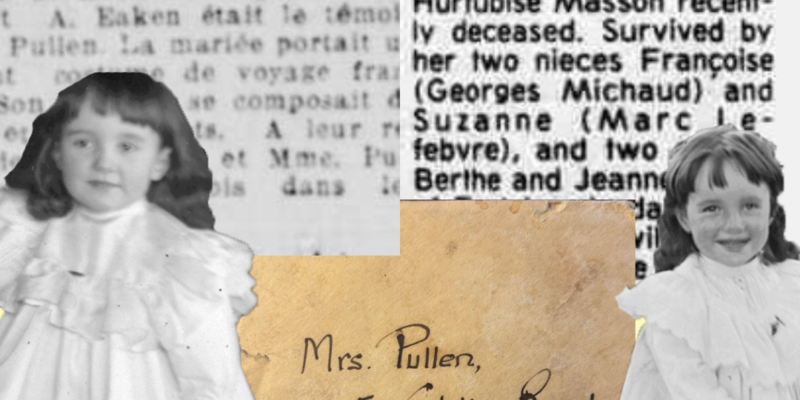What was life life for young girls at the beginning of the twentieth century?
Suzanne Hurtubise, sometimes referred to as Suzette in our archives, was the daughter of Flavien Hurtubise and Alice Rodier. Flavien being the only Hurtubise brother of his generation to have children, his daughters, Suzanne and Claire, were Dr. Leopold’s only nieces.
Suzanne appears in several photos taken by Dr. Leopold, now displayed in the Hurtubise House for guided tours. She may have lived in the Hurtubise house with her parents and sister for a time, or she could have often visited the house during summer holidays. For a long time, we only knew that the little girl in the photos was named Suzanne. The hypothesis was that she was Leopold’s niece, but we were unable to confirm the fact. However, a visitor informed us that in one of these photos, Suzanne is in a room which still exists in Villa Maria high school, which allowed us to dive deeper in our research.
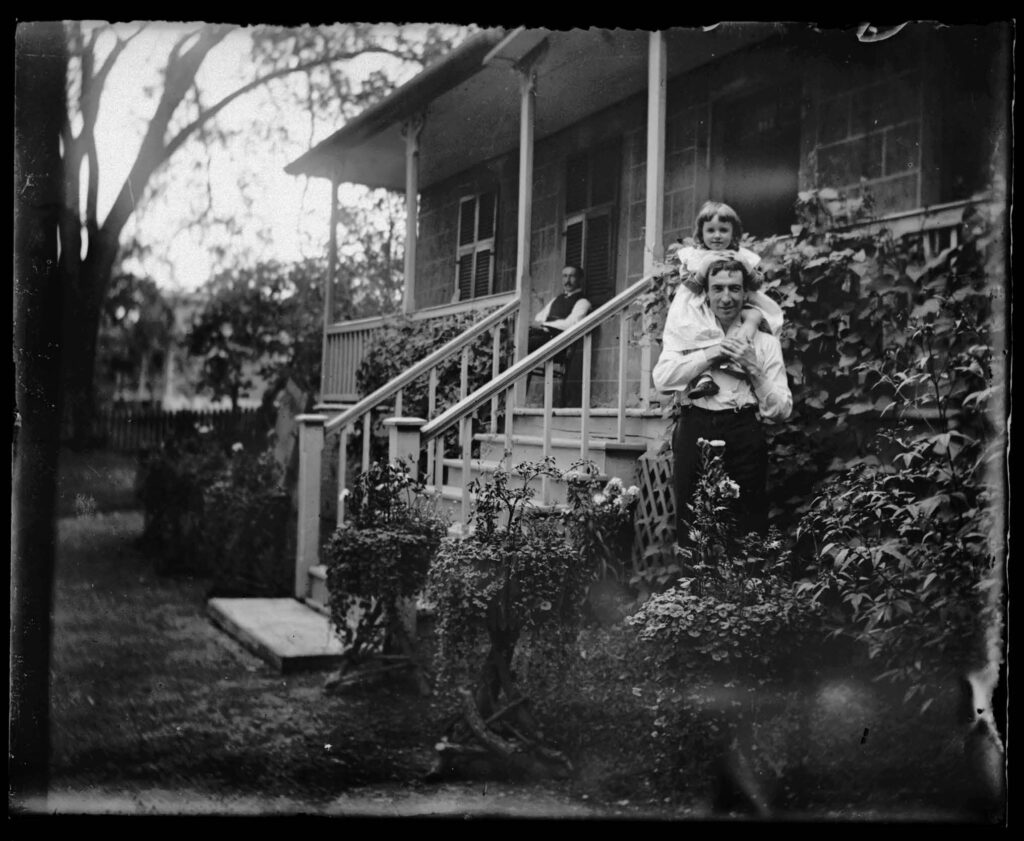
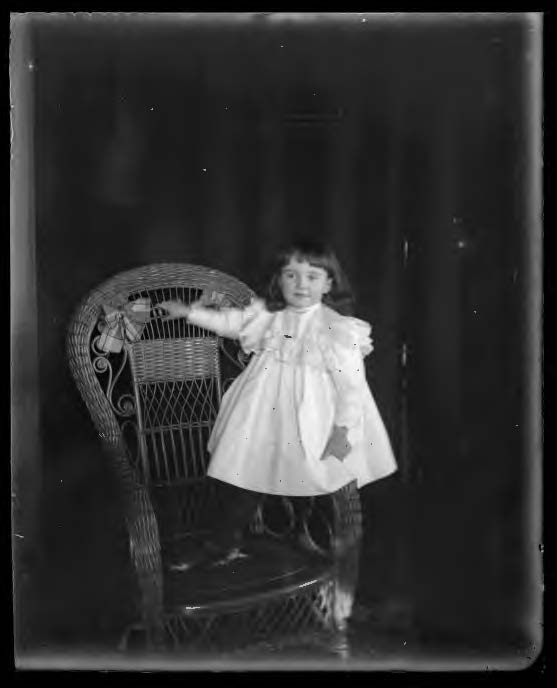

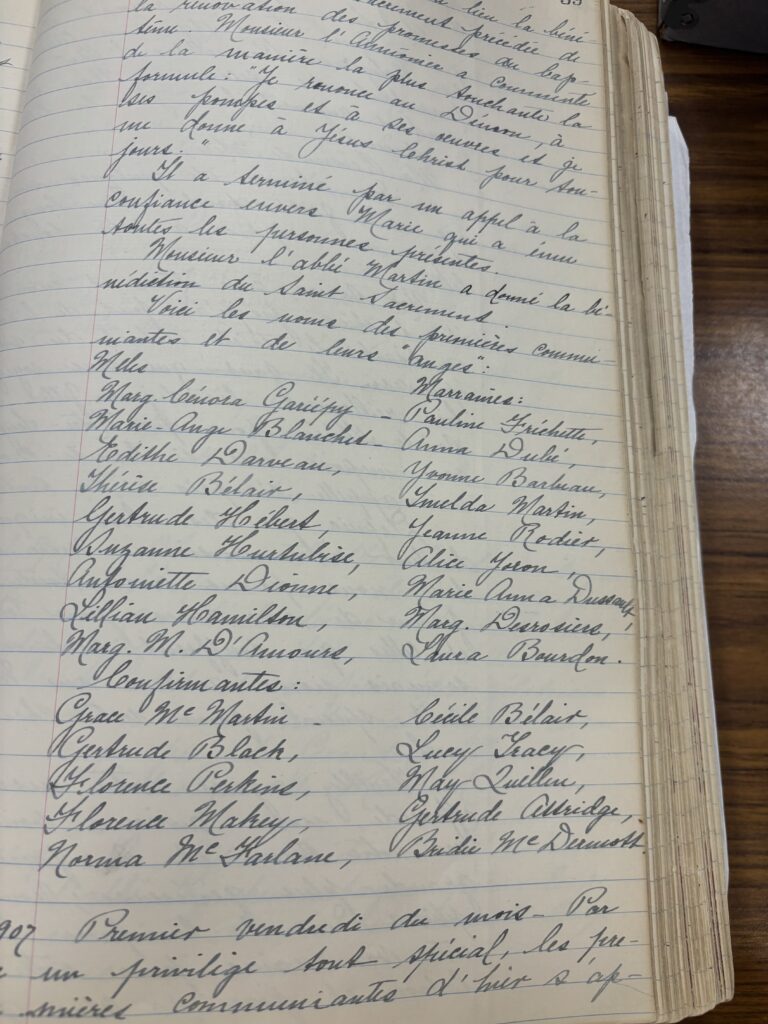
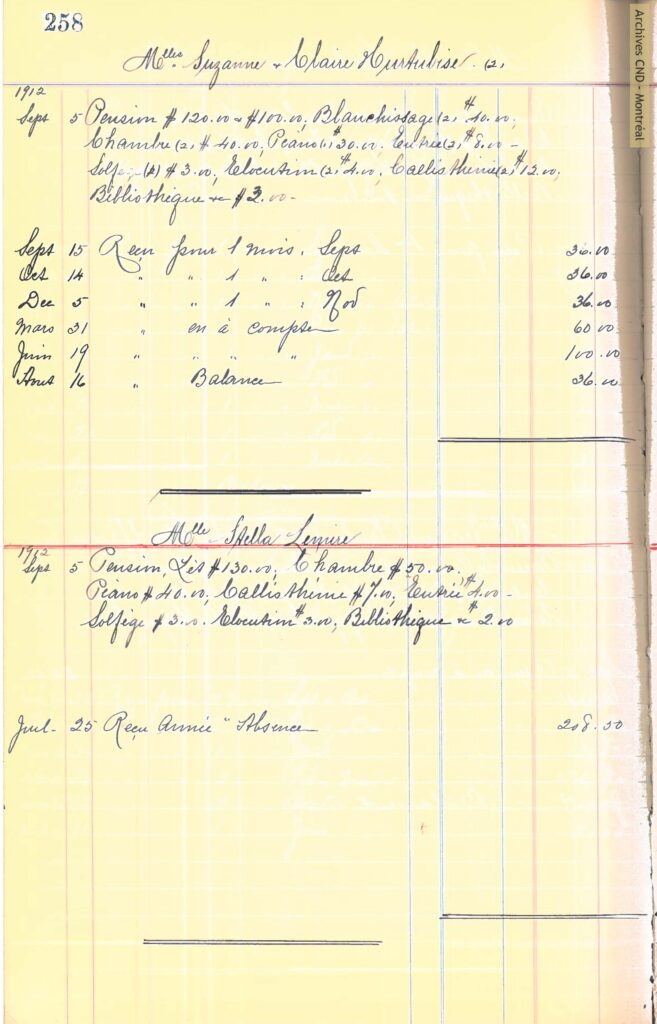
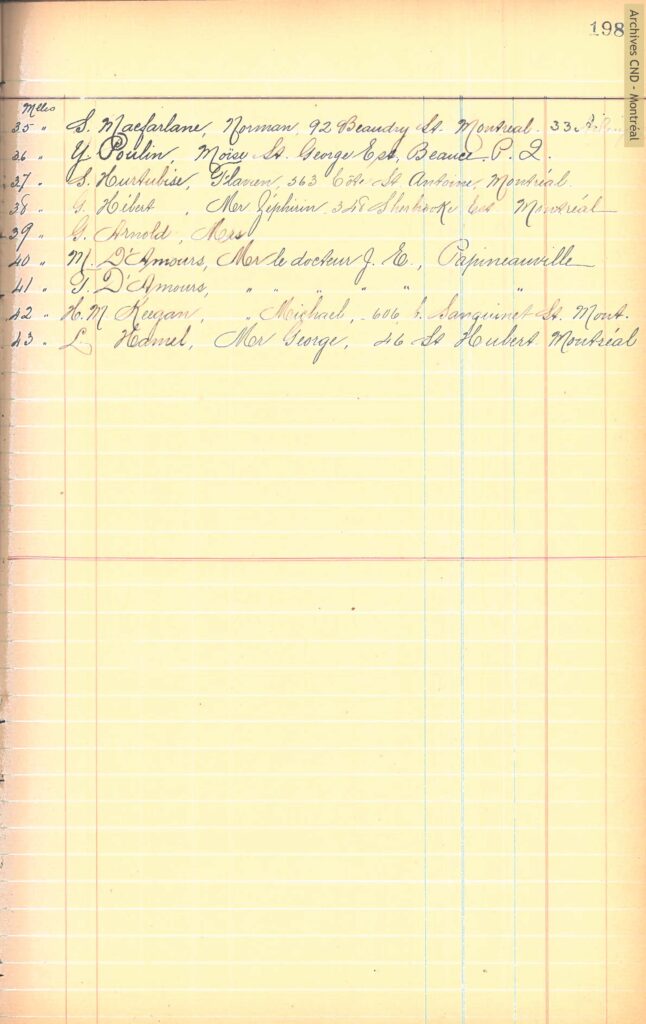
The fact that Suzanne attended Villa Maria gave us a hint into her education. We found receipts dating from 1906 to 1913. This allows us to understand what kind of education she received. There were boarders and day-to-day students at the primary level, but all high school students were boarders. At the beginning of the twentieth century, Villa Maria had between 170 to 200 students. Amongst this number, many of them came from the United States and stayed at the school except for Christmas and summer holidays.
We might guess that a private Catholic school for girls would concentrate solely on religious teachings and “feminine” learning such as sewing and art. Religion indeed played a big role in the school—the students took part in religious feasts, for example—but there was also a myriad of other classes : the girls studied subjects such as astronomy, history, and literature. Professors from Loyola University and Université de Laval were invited to enrich courses for the students. They also sometimes participated in outings —once, the students were invited to Loyola to assist in experiments on X-Rays. There was also time for extracurricular theatre activities. For example, the students performed Shakespeare plays at the schools. After leaving Villa Maria, the young girls probably had one of the most well-rounded educations available in Montreal at the time.1
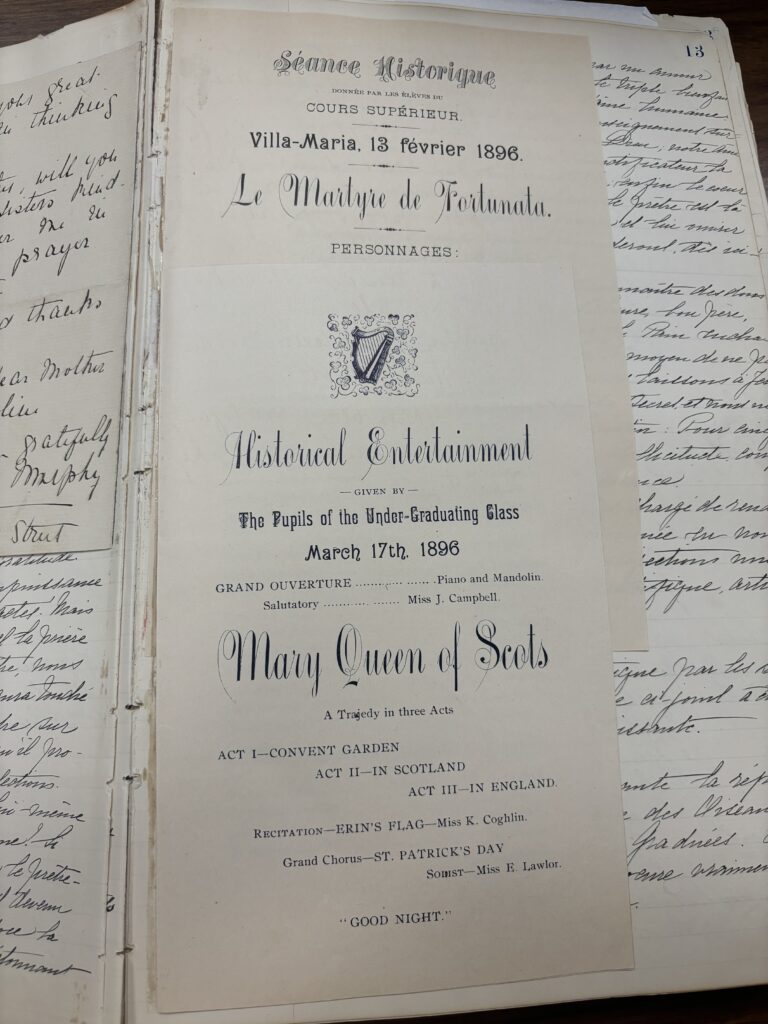

Even after our discovery about Suzanne’s schooling, we had no traces of her after her studies other than letters which are addressed to her in our archives. We did not even know whether the letters we found were for our Suzanne or a different one. However, thanks to deeper research in newspaper archives, we were able to find Suzanne’s wedding notice. In 1920, she marries an Englishman from London, C. Vivian Pullen. Her marriage allows us to understand that the Hurtubise, although French in origin, found themselves in the same social circles as Anglophones in Montreal.
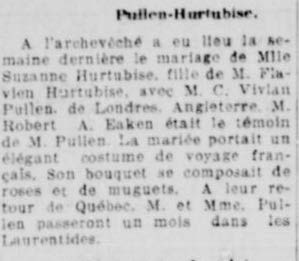
Suzanne was also very well-travelled. She would have visited Europe with her husband and later her sister for long periods of time. We also know that she would have visited or lived in New York thanks to letters addressed to a “Mrs. Pullen” at an address in the city.
It seems that Suzanne and her husband C. Vivian Pullen never had children. We have not found his first name nor traces of his life in Montreal, but we have found Suzanne’s obituary. She passed away in Montreal in 1984. She was 88 years old, placing her birthdate in 1896. She would have seen the quick urbanization of Westmount with her own eyes, won the federal right to vote with all the women in Canada in 1919 during the first world war, and won the provincial right to vote in Québec in 1940 during the second world war. She lived through Expo 67 and would have seen the 1976 Montreal Olympics. In 1984, she leaves behind two nieces, daughters of Claire, and two cousins from her mother’s side of the family.

Suzanne was buried in the Notre-Dame-des-Neiges cemetery after a long and rich life. It is through the photos of Dr. Leopold displayed in the Hurtubise House that we can now remember her childhood and imagine her life.
- Helen Lanthier, “Monklands Then, Villa Maria Now.” Congrégation of Notre Dame, p. 38–40
“Annales de Villa Maria,” Archives de la Congrégation de Notre Dame.
↩︎
